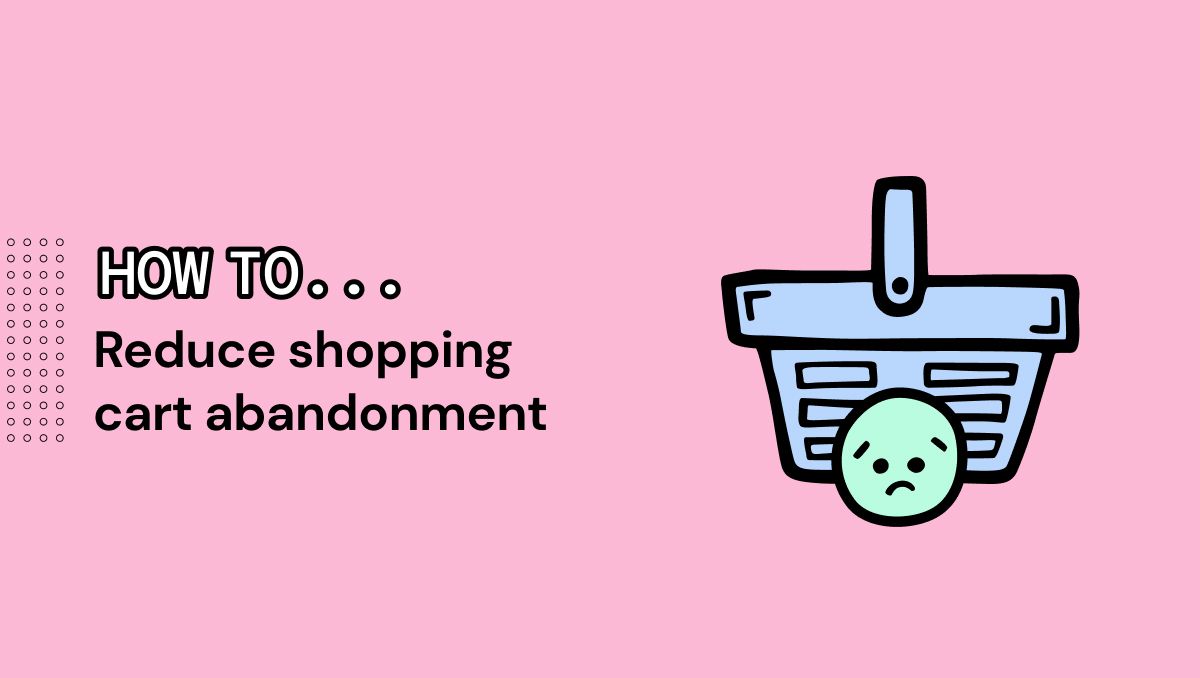In a typical online shopping environment, shopping cart abandonment occurs when a potential consumer begins the checkout process for an order but discards it before completing the transaction. Any item that a shopper adds to their shopping cart yet fails to convert into a purchase is labeled “abandoned.” Therefore, shopping cart abandonment is a critical component of the online shopping experience that ecommerce owners monitor closely.
In most instances, the total number of completed transactions is divided by the total number of initiated transactions to get the shopping cart abandonment rate. This rate portrays the number of such situations in percentage terms.
Statistica.com published that as of March 2021, almost 80% of online shopping orders were abandoned. Such figures depict a rising problem for ecommerce owners as the shopping cart abandonment rate serves as one of the key performance indicators for an eCommerce business. The lower the abandonment rate, the more orders received and the more profits and sales merchants earn. Getting high shopping cart abandonment rates might be an indication of certain unaddressed issues shoppers face during the customer journey. Thus, it is imperative that the root of the problem is tackled to reduce high abandonment rates.
This post will delve into some common reasons for shopping cart abandonment and discuss some proven ways ecommerce store owners can reduce shopping cart abandonment.

Reasons for Shopping Cart Abandonment
High Prices
A typical online shopper usually looks for the best deals and would likely jump ship if they feel prices are too high for comfort. Comparison shopping is not a new phenomenon; hence it is no wonder online shoppers make use of this tactic.
Complicated Checkouts
It is ideal for shoppers that ecommerce owners simplify the checkout process. The checkout process should not demand too much input from customers, yet it should be able to give them all the relevant information needed. If the process becomes too tedious for customers, they are likely to quit halfway through.
Shipping issues
Promising customers that their purchase will be delivered on a certain date leaves them in an expectant phase. However, if the said date is due and their order fails to arrive as promised, it leaves them quite disappointed. Nevertheless, the fact remains that most shoppers do not like paying for shipping; thus, if they have to, then they expect that the set timelines would be met without any unforeseen complications.
Extra fees
The joy of seeing a much-desired product at an affordable price would push customers to put the item into their shopping carts. But unfortunately, they get to the checkout stage only to find out that extra charges such as shipping, packaging, and even taxes inflate the overall cost of the item, leading to the abandonment of the item in search of a better offer.
Lack of trust
Security of online transactions, especially in cyberspace where online fraud is rampant, is deemed by customers as a significant concern. Throughout the shopping process, it is essential to portray a very slim possibility for data breach and the safety of the data provided by shoppers. Building a good, strong, and trustworthy brand can help mitigate some of these fears in buyers, especially first-time visitors. In addition, customers need to feel very welcome and secure with the sites they are purchasing from. Displaying well-known verification symbols and logos, making customer product evaluations easily accessible, and providing full disclosure on security rules are all excellent ways to inspire trust in your brand and generate confidence in your site.
Limited payment options
A potential reason for cart abandonment is the lack of multiple payment options. When customers are limited in the payment options available, they would quickly switch websites searching for a similar deal that offers them a payment option available to them.
Shoppers tend to have their preferred payment method. As such, ecommerce owners ought to offer the most popular payment methods available and not simply limit it to ones that they feel everyone ought to have.

Ways to reduce shopping cart abandonment
Optimizing Site Speed
According to a study, if a page load is delayed by one second, conversions are lowered by 7%. When used on checkout pages, this can have a significant negative impact on conversion. Ecommerce store owners should prioritize web page speed optimization. A site’s speed significantly impacts its SEO (search engine optimization) and bounce rate. As new pages are added to your company’s website, a page speed optimization strategy should be devised and followed. In addition, there should be guidelines in place for your designers on how to optimize pictures, how to handle embedded media, and how to employ widgets and plug-ins.
In the event that the delay cannot be avoided, inform the consumer of the exact loading time. It is critical to keep customers informed throughout the checkout process.
Being transparent
Hidden clauses or charges should be revealed upfront. Also, if certain payment methods are not available, do not wait till the final stage of checkout to reveal that. Honesty and transparency make a considerable difference and foster a certain sense of trust between the brand and customers. Unfortunately, credit card fraud and identity theft incidences have marred the online purchasing experience. People are understandably wary of disclosing their payment information online. They are becoming more knowledgeable; hence, they may begin to trust you if you have a security system in place. When you display well-known security seals, your audience will start to trust you.
Additionally, customers want to know when their items will arrive. Reduce worry and increase conversions by providing precise details about possible delivery options and times. Don’t leave your customers guessing about shipping fees and schedules.
Having a quick checkout flow
For back-end/marketing purposes, adding too many fields to the checkout form will drastically reduce the chances of landing a willing customer. Streamline the process so that buyers only have to provide the barest minimum of information. Unless necessary, don’t add another field, such as one’s home address. With each new unjustifiable field, you may be pushing your customers further away from a hassle-free checkout.
The consumer spends most of their time making the purchase, but after it is over, they want to get it over with as fast as possible. The customer experience is harmed when consumers are directed to many pages during the checkout process. Including a progress indicator can make the checkout procedure less stressful by keeping the customer informed about the number of remaining phases.
Then again, you can afford guests the opportunity of an easy checkout option by allowing them to make purchases without having to create an account.
Finally, incorporating social logins is another wonderful way to work in your stride. Whether it’s Google, Facebook, or the newly announced Apple login, these alternatives increase convenience, reduce registration form fields, and eliminate the strain of manually entering user information again and over.
Allowing multiple payment options
The lack of different payment choices is one of the most common causes of cart abandonment. The potential consumer will switch websites to find a similar bargain with various payment choices elsewhere when this occurs. Although credit card payment options seem obvious, consumers now have more options than ever before for paying for items online. PayPal is still going strong, but mobile payment systems like Apple Pay and Google Wallet are gaining traction, especially among younger generations.
Providing different payment methods eliminates another cause for customers to abandon their cart and go elsewhere. Granted, the more payment options you provide, the more work you’ll have as a business owner, but you’re giving your customers what they want, and that’s what matters.
Wrapping Up
It takes time and effort to create a memorable shopping experience. In essence, you only need to care about one thing: providing an enjoyable experience for your visitors and existing customers. Once you’re able to achieve that, you have a higher chance of reducing the number of customers that abandon their carts on your ecommerce store.
